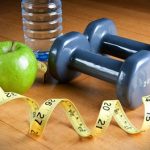 Dehydration is often a concern of marathon runners and other athletes, especially during warm weather. Unfortunately, it can be a problem for the very young and the very old, as well. What many people may not know is that dehydration can be a problem for anyone. Clinical dehydration can occur in people who are vomiting or have diarrhea and do not know how to replace the salt and water that is exiting the body.
Dehydration is often a concern of marathon runners and other athletes, especially during warm weather. Unfortunately, it can be a problem for the very young and the very old, as well. What many people may not know is that dehydration can be a problem for anyone. Clinical dehydration can occur in people who are vomiting or have diarrhea and do not know how to replace the salt and water that is exiting the body.
What are the signs and symptoms of dehydration?
In the hospital, we see patients who have some of the following signs and symptoms of clinical dehydration:
• Sudden weight loss
• Decreased blood pressure upon standing, along with rapid heart rate
• Lightheadedness, dizziness or syncope (temporary loss of consciousness) upon standing
• Flat neck veins when lying flat in a bed
• Sunken fontanel (soft spot on the top of a baby’s head) in infants
• Rapid, thready pulse (a small fine pulse, feeling like a small cord or thread under the finger)
• Decreased urination
• Dry mouth
• Hard stools
• Thirst
• Elevated sodium level in the blood
• Confusion, lethargy
• Coma
• Hypovolemic shock (when severe fluid loss makes the heart unable to pump enough blood to the body)
Can dehydration from exercise cause muscle cramps?
For healthy adults, many people think exercise-associated muscle cramps can be a sign of dehydration. The first report of muscle cramps related to physical activity was from laborers working on steamships and in mines in hot and humid conditions more than 100 years ago. Many athletes think this is associated with depletion of electrolytes related to dehydration but, in fact, these cramps could be from both muscle fatigue and dehydration and not solely from dehydration.
Is it possible to have chronic mild dehydration—and, when should I seek medical attention?
It is estimated that some people can have chronic mild dehydration, which usually can be reversed by drinking more fluids. However, severe dehydration is a medical emergency and must be treated.
How much fluid replacement do we really need?
Because we lose fluid every day through our skin, respiration, perspiration, urine and bowel movements, the Institute of Medicine advises the following:
• 3 liters for men (about 13 cups per day)
• 2.2 liters for women (about 9 cups per day)
Fluids come from both fruits and vegetables, as well as what we drink. Please keep in mind that people can drink too much water if their kidneys are not healthy. Everyone should discuss hydration with their primary care physician to determine the appropriate amount.
What foods combat dehydration?
A few examples include:
• Cucumber – Known to soothe swollen eyes, it is the cool, watery inner portion that provides extra water
• Salad – Mixed green salads can contain up to 94% water
• Tomatoes sauce – Can contain up to 90% water
• Chicken noodle soup – The sodium allows you to retain water
• Eggplant
• Applesauce
• Zucchini
• Cantaloupe (90% water)
• Watermelon (92% water)
• Bell peppers (92 % water)
To find an excellent doctor who is right for you, please call our Physician Referral Service at 866.804.1007.
References:
Mayo Clinic. (2013). Dehydration.
Copstead, L.,E. & Banasick, J. (2010). Pathophysiology, 4th edition. St. Louis, MO: Saunders Press.
Top 30 Hydrating Foods (2013). Shape Magazine.
Swellnus, M.P. (2009). Cause of exercise associated muscle cramps (EAMC) – alterered neuromuscular control, dehydration or electrolyte depletion. British Journal of Sports Medicine 43; 401- 408.
